Submitted by Ashish Batra
Sultan Qaboos Grand Mosque, Muscat: An Iconic Architectural Wonder
Oman Architecture News - Apr 21, 2025 - 12:44 93863 views
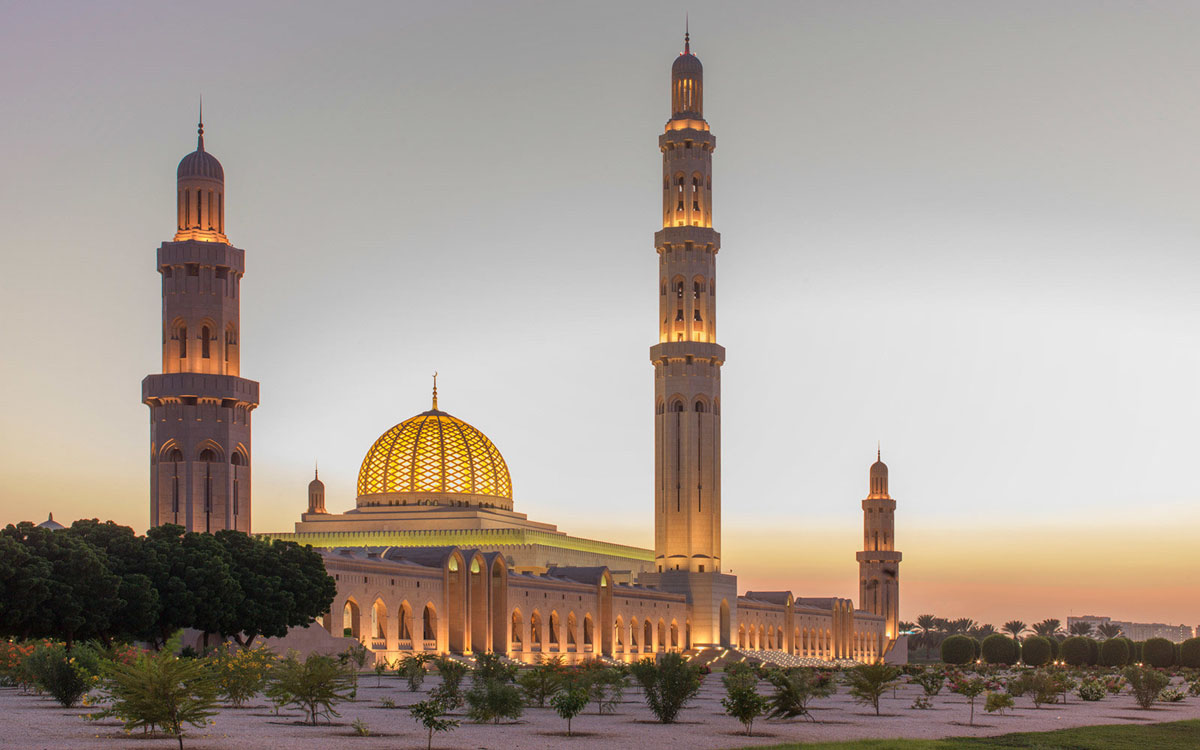
The full name of this magnificent iconic structure is the "Sultan Qaboos Grand Mosque", which dominates the skyline of Muscat. The mosque is square in shape which surrounds the central dome with a total height of 50 meters. The 5 minarets define the limits of the site representing the 5 pillars of Islam. The main minaret is 91.5 meters tall and the others reach up to 45 meters.
The main prayer hall (musalla) can hold over 6,500 worshippers, and the women’s prayer hall (musalla) can accommodate 750 worshipers at a time. The outside paved area in the gardens can carry around 8,000 worshipers; and with an additional usable area for prayer in the interior courtyard and the corridors, making a total capacity of the mosque up to 20,000 worshipers.
The total site area of the mosque is 416,000 square metres (102 acres) and the complex extends to cover an area of 40,000 square metres. This Grand Mosque was inaugurated by Sultan of Oman in the year 2001 to celebrate the 30 years of the Sultan's reign.
Astonishing facts of its Design, Interiors and Architecture which will make anyone to visit the Grand Mosque of Muscat.
Sultan Qaboos Grand Mosque in Muscat is one of the most beautiful and extravagant modern mosques in the world. This grand iconic structure in the Arab world took six years to build. The mosque features a blend of Islamic, Middle Eastern, and Omani architectural styles. Despite these things there are few astonishing facts regarding its design, interiors and Architecture that will make anyone to visit this Mosque.
1. World’s Largest Chandelier
When it opened for public, the mosque used to have the world’s largest chandelier. The chandelier is located in the centre of the men’s prayer hall and measures a staggering 14 meters and weighs 8,500 kilograms. It holds around six hundred thousand shining bright Swarovski crystals, with 24 carat gold plating which took more than four years to complete.

Chandelier inside prayer hall. Image © fotolibra
2. World’s Largest Carpet in the Prayer Hall
When it opened for public, the mosque used to have the world’s largest single piece carpet, which is now the second largest single piece carpet in the world. The carpet is one of the major features of the design of the interior which covers around 4,343 square meter area of the prayer hall. It contains, 1,700 million knots, measuring around 60x70 meters, weighs around 21,000 kilograms and took around four years to produce, and brings together the classical Persian, Isfahan and Kashan (cities in Iran) design traditions. This hand-woven carpet was produced by Iran Carpet Company (ICC).
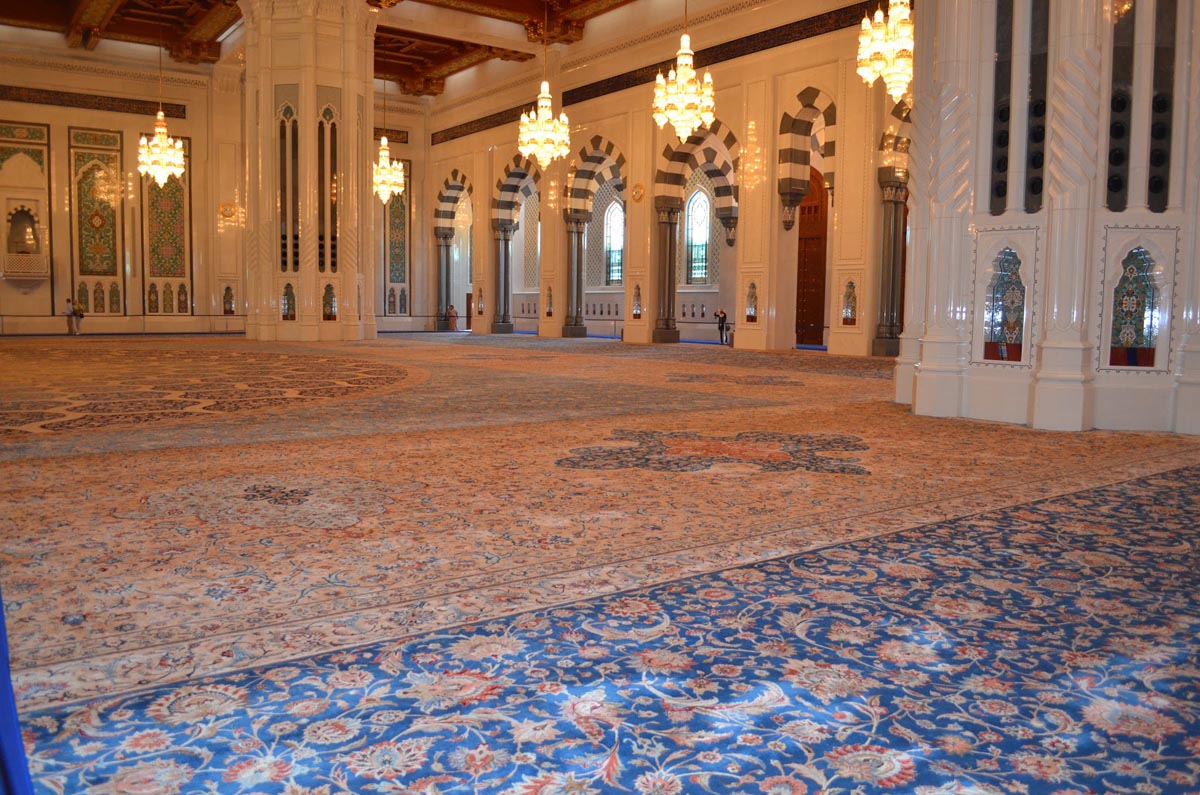
Carpet inside prayer Hall. Image © wandainoman.blogspot
3. Delightful Art and Interior
The Grand Mosque is embellished in beautiful, colourful mosaic patterns. There is no official number for how much stones have been used, but surely it is an amazing and impressive sight. Walk inside the halls is important to see the handcrafted details of the mosque. It is truly a one-of-a-kind piece of interiors art.
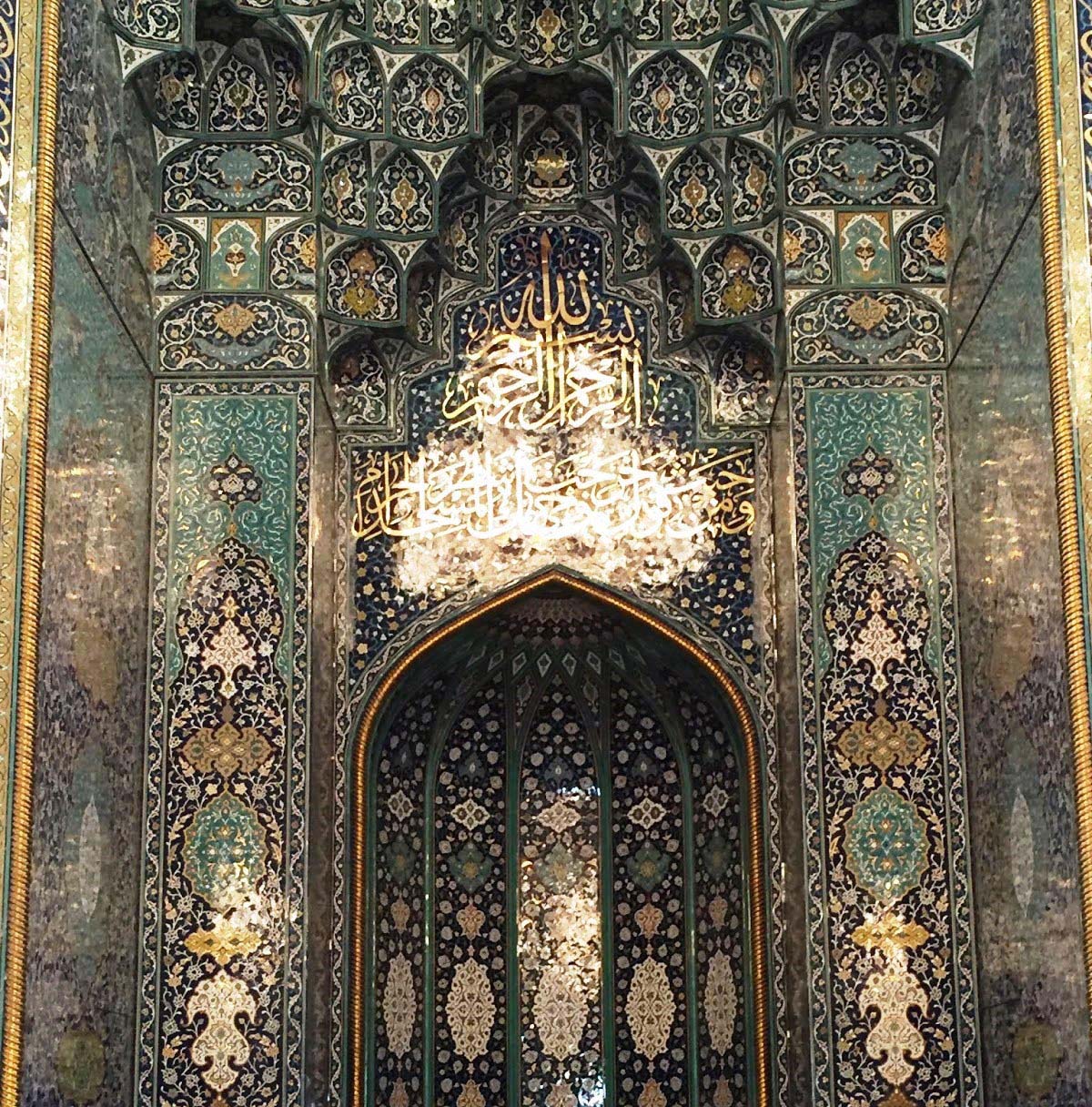
Beautiful mosaic art. Image © manonthelam

Beautiful mosaic art. Image © manonthelam
4. Modern Islamic Architectural Wonder
Quietly imposing from the outside and inside, this mosque is a glorious piece of modern Islamic architecture.
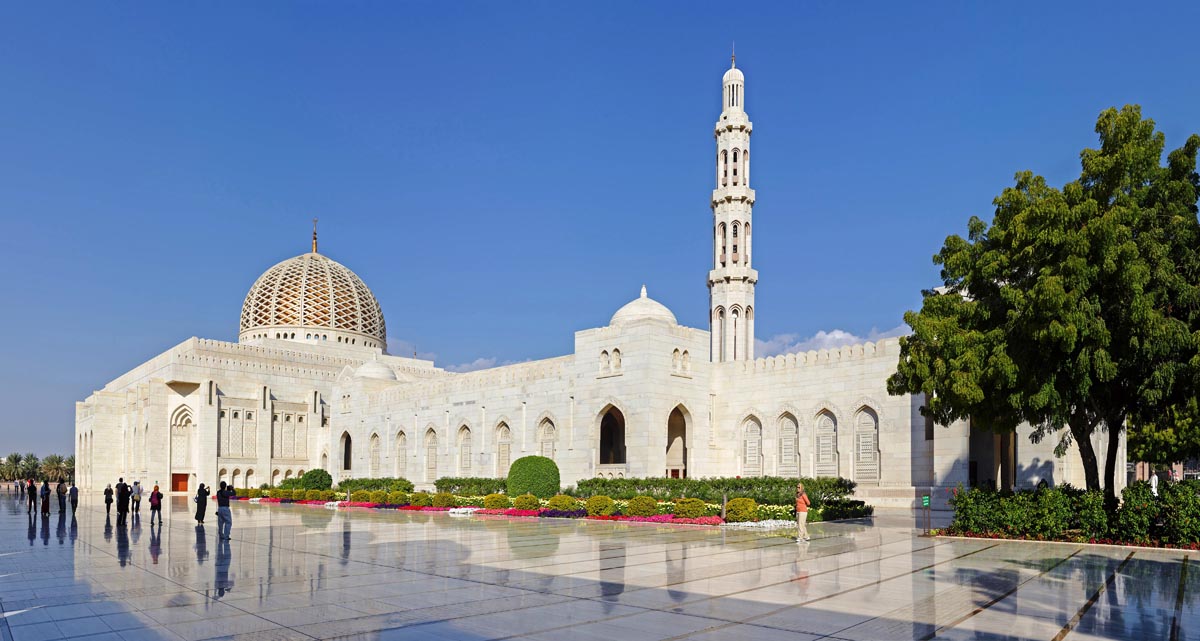
Outer view of Sultan Qaboos Grand Mosque. Image © wikipedia
5. Welcomes All
The Sultan Qaboos Grand Mosque is one of the only mosques in Oman that allows any visitors (non-Muslims and of any religion) inside the prayer halls. Children under ten years of age are not permitted inside the prayer halls. Inside the prayer halls there is no eating or sleeping or use of cell phones is allowed. These rules help anyone to provide a peaceful and quiet worship environment in the fabulous building.
If you visit the Sultan Qaboos Grand Mosque someday, do not miss to see the library and walking around the outer corridor along the mosque which features a variety of mosaics artworks and explanations of the different design styles uses.

Corridor along the mosque. Image © tripadvisor
6. Beautiful mosaics and ceilings throughout the mosque
There are numbers of beautiful mosaics and art patterns throughout the mosque. Detailed carvings and its uniqueness is a must watch. Inside the mosque the timbered panels reflect the architecture of traditional Omani ceilings. The whole Mosque is decorated in colourful and beautiful mosaic patterns.

Omani architectural style ceilings inside the mosque. Image © alamy
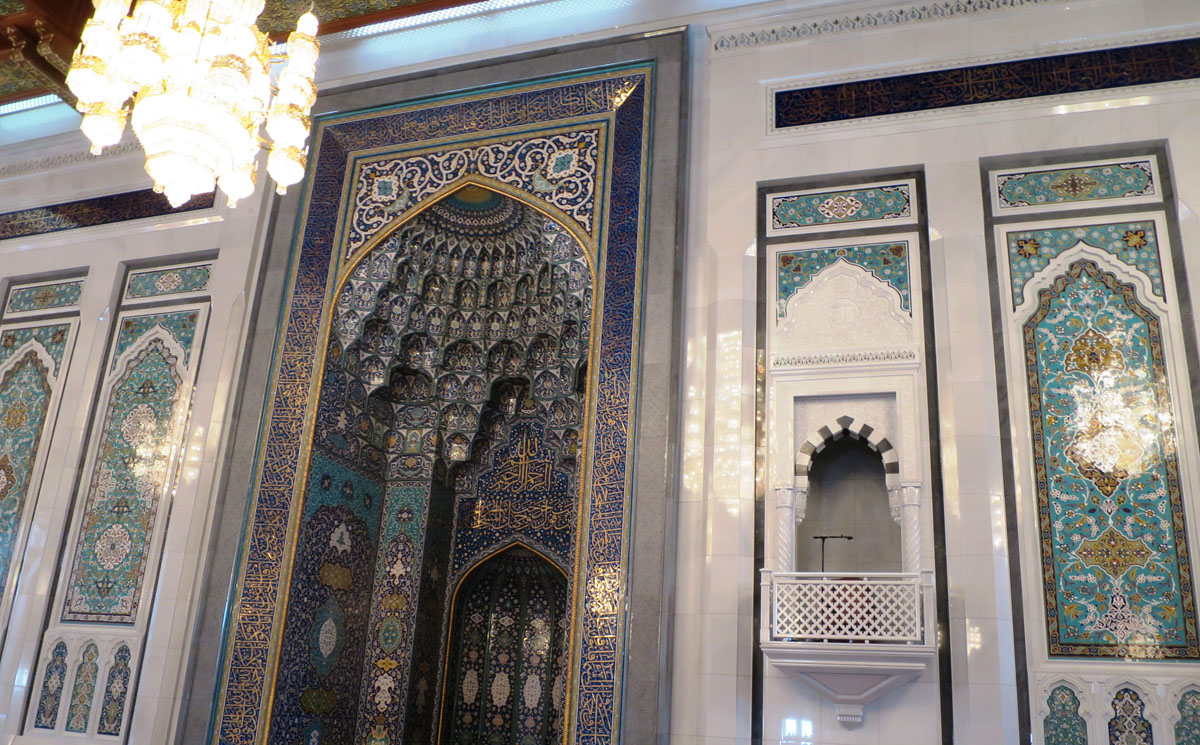
Beautiful mosaic art. Image © manonthelam
7. Surrounded by beautiful gardens
The mosque is surrounded by beautiful and well maintained gardens. Inside the surrounding walls of the mosque there are more gardens and long magnificent walkways. It feels like a perfect way of designer/architect to protect the mosque from the noise of the city.

Walkway and tree plantation outside mosque. Image © alamy

Beautiful and well maintained garden inside the mosque. Image © alamy
In 2015, the Sultan Qaboos Grand Mosque features in the list of "The Telegraph", UK’s leading newspaper, as one of the 25 most beautiful mosques in the world. Sultan Qaboos Mosque is a must visit Iconic Architectural wonder in Muscat, Oman.
What is special about Sultan Qaboos Grand Mosque? In addition to being the largest Friday mosque in Oman, the mosque acts as a hub for the spread of Islam, especially its Ibadhi tradition, which is very significant in the nation.
Who built the Sultan Qaboos mosque? Mohammed Saleh Makiya, an Iraqi architect, collaborated with Quad Design to build the Sultan Qaboos Grand Mosque in Muscat, Oman. Edgard Bali completed the interior design.
What to wear to Grand Mosque Muscat? It is recommended that visitors dress modestly, covering their arms and legs and avoiding anything that is too tight. Girls and women seven years of age and up must cover their hair.
What are the architectural features of Sultan Qaboos Grand Mosque? The mosque is 50 meters high in total and has a square design that encircles the central dome. The site's boundaries are delineated by the five minarets, which stand in for the five pillars of Islam. The other minarets are as tall as 45 meters, while the main one is 91.5 meters.
This article was originally published on the World Architecture Community on 6 August 2018. It was updated with additional information on 21 April 2025.
> via alamy.com and manonthelam.com
